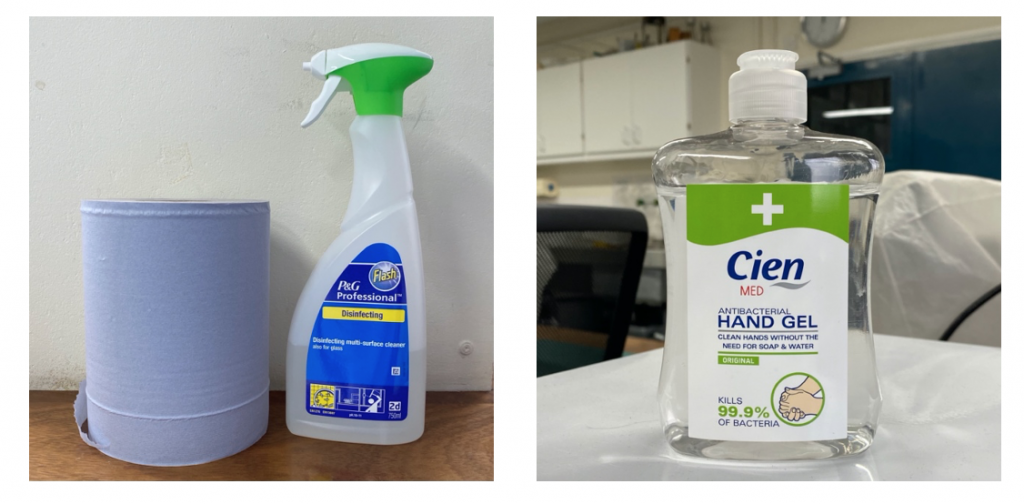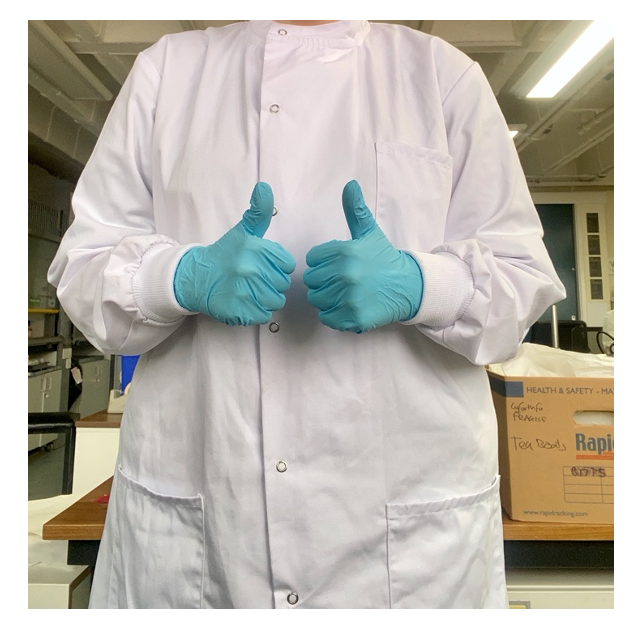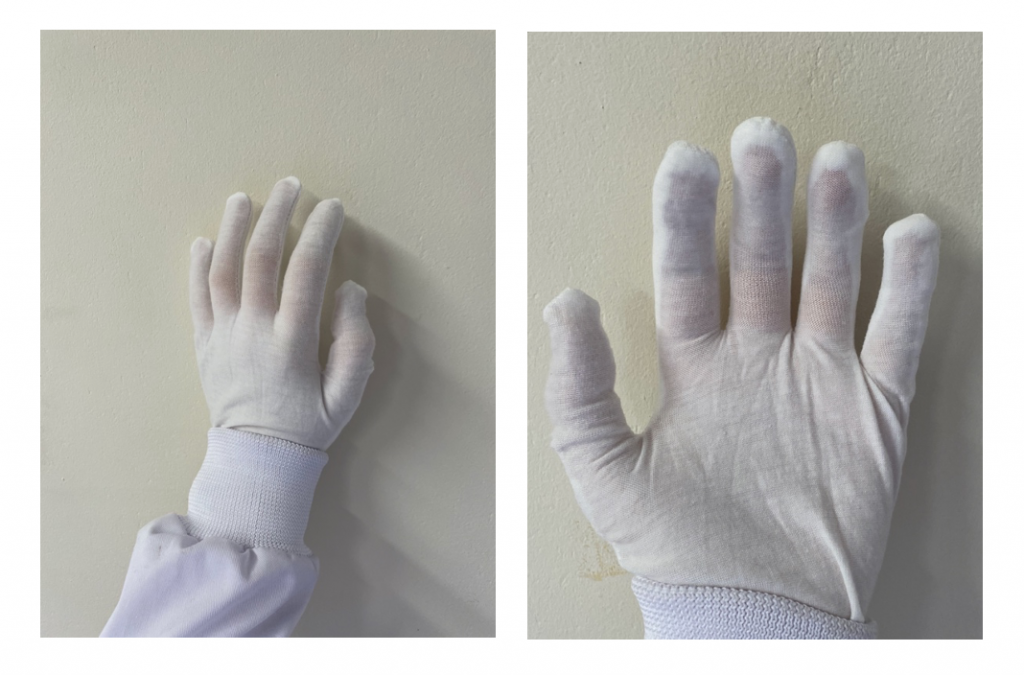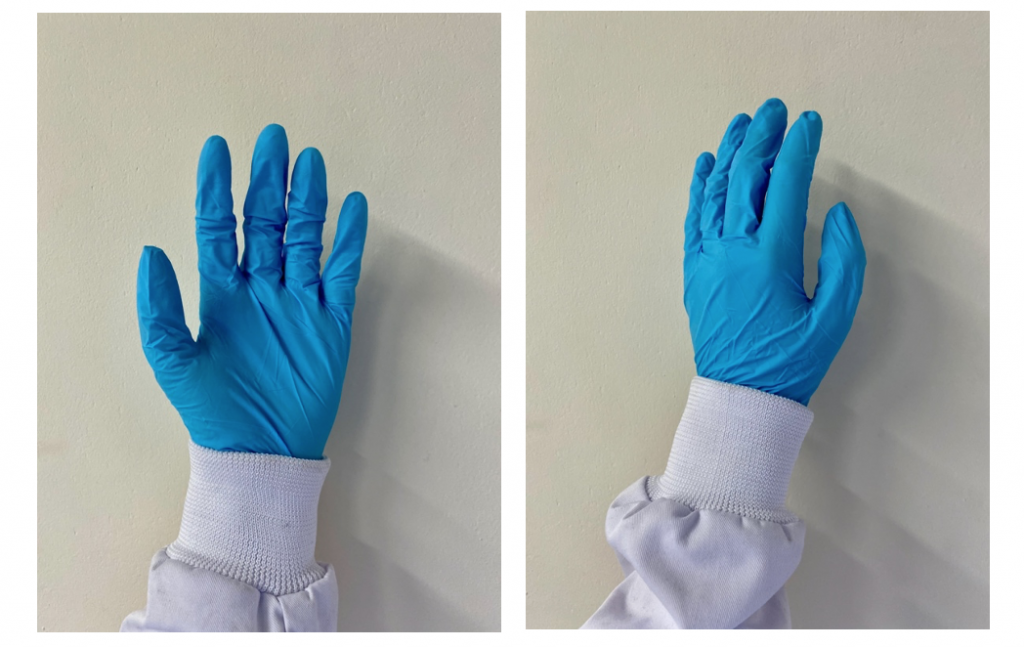Object Handling
22 March 2021Working in conservation, we have a duty to look after objects that have been entrusted to us. Each time we handle objects, the risk that we could damage them increases.
Often, damage can be caused by cumulative actions and can happen suddenly without any warning. It is vital that we minimize the risks by handling objects only when necessary and taking appropriate precautions.
Within conservation, it is with the utmost importance that we protect the items within our care. The methodology of handling is just as detrimental as treating the objects and it is crucial for us to minimise and prevent further damage from taking place.
Objects within collections may also be one of a kind or a rare material, therefore irreplaceable; and so, we must protect them for future generations.
When we are at home, handling objects of different weights and materials seems simple enough to do, but in a lab or museum environment, objects are much more fragile than we may think. A good habit is to always approach the items we handle with patience and care, regardless of its background.
Avoidance of unnecessary damage, such as accidental mishandling, is crucial to ensure the safety of collections and objects within our care. With correct training, objects can withstand a better chance at persevering when being handled correctly.
As a student in conservation, whether new or experienced, there are some simple rules that we can follow in order to protect ourselves and the objects we are treating:
Essential rules when handling
- Tie hair back
- Remove jewellery and lanyards
- Have a clean and stable surface
- Wear PPE such as lab coat and gloves
- Be patient and do not rush
If you have long enough hair, it should be tied back so that it doesn’t come into contact with lab equipment, chemicals or adhesives. Hair can fall in front of our eyes, restricting our vision, which isn’t safe in a lab where we need to focus at all times. We also shed hair easily, so it’s better to prevent loose hairs from falling onto the objects we are treating!
Accessories, such as jewellery and lanyards are a health and safety hazard as they can damage objects, react with chemicals and become entangled in machinery!
Since we are working in labs using shared facilities amongst other students and staff, it is hygienic and responsible to sanitise our hands and clean the workspaces and equipment before we use them. We do not know what harmful or corrosive substances have been on a surface prior to us using it! These are some of products we use within the labs to cleanse our surroundings:
Do I need PPE?
Gloves and lab coats are worn to protect us from potential spillages, burns and breakages. Depending on the treatments you may be carrying out, equipment such as eye goggles and dust masks are required to protect you from exposure to light radiation, chemicals, gases and airborne dust and dirt fibres.
As of current, common practice within our labs is to tie loose hair back, wear a lab coat and a suitable pair of gloves, preferably nitrile.
Are gloves important?
Ask yourself, do I need to wear gloves when handling this object?
Our hands produce lots of oils and salts which can aggravate objects and cause staining or corrosion; wearing gloves can prevent this.
Some objects may be coated in harmful or toxic substances which can be absorbed through exposed skin. Gloves are a form of equipment that is used to create a protective barrier between the objects we are treating and ourselves.
A common practice we have in the labs is washing the gloves between treatments as if they are our own hands until we need to remove them at the end of a lab session.
Below are some examples of gloves you might use within conservation:
Cotton gloves:
- Thick and can be restrictive of movement
- Absorbent
- Transfers fibres, dirt or moisture
- Soft
- Useful for paper conservation
You may have seen characters in films or tv shows handling objects with white cotton gloves and although this is still a common practice in some institutions, it isn’t always favourable!
Cotton gloves can make our hands sweat, restrict finger movement and are absorbent, which is not safe practice when using corrosive chemicals. They also do not have a good grip on smooth polished objects, such as high fired porcelain, glass or wood. A benefit is that they are soft, compared to disposable gloves and so they are useful within book or paper conservation as they aren’t as rough on the bindings and pages.
As you can see, the ones in the images I have provided are made of a thinner cotton, making it more breathable. The gloves have thick seams, and my fingertips are very rounded, which I think would make detailed work difficult for me.
I think it may be more suitable to wear some disposable gloves underneath, but this would restrict finger and hand movements further.
Nitrile, Latex and Vinyl free gloves:
- Waterproof
- Improved dexterity
- Rough with good grip
Though wasteful to the environment, which is something we need to be more mindful of, disposable blue nitrile, vinyl and latex free gloves are preferred by conservators today as they are waterproof, resistant to a lot of chemicals and do not restrict hand or finger movements.
Gloves should be removed and disposed of safely or cleaned them between each use to avoid cross contamination of residue and materials.
It is also common sense to dispose of ripped or torn gloves when handling or treating objects to keep yourself and the objects safe!
How should I handle an object?
Once you have chosen the correct PPE and followed rules discussed prior, there are multiple ways of handling an object, and it will vary in accordance with its need.
- Study your object: figure out its strengths and weaknesses
- Check for any cracks, flimsy areas and whether items are unstable.
- Remove any loose attachments, such as a teapot lid (if possible) but keep them close as to not lose them!
- Don’t pick up an object by its rim or a handle. These areas are weaker areas and are more susceptible to damage
- Use both hands, as one hand can support the base of the object and the other can cradle the side for further support
- Make use of sand trays, sandbags and foam where possible to support an object whilst treating, storing or transporting it
- If an object is too heavy, do not injure yourself by trying to lift it alone! Have another member of staff assist you
Transporting Objects
You may need to transfer your object to another lab to conduct further studies, so how might you do this safely?
Assess and plan your route of action!
A good transport route, whether by foot or trolley, should be safe and clear of obstacles and places of direct contact such as a busy corridor.
Safe storage?
If possible, place objects in a suitable carry tray, box, or trolley.
Padding or cushioning such as foam, sandbags or bean bags can be used to minimise movement of objects, vibrations and increase support.
To avoid breakages, do not store different materials together, such as paper and ceramics
This is an example of a weighted sand glove being used to support a ceramic vessel whilst the adhesive sets and dries. They’re also used to reduce vibrations and to prevent objects from moving around during travel.
The box could be situated on a trolley, such as the one provided, and transported to another lab. I would advise using a less full or empty trolley than the one in the image provided to transport your objects, as this will prevent other students from losing their work. If you’re unsure about using a trolley, ask a member of staff first.
Get a travel buddy!
Since you’re occupied either carrying or wheeling your objects, have another peer or member of staff with you to help open and close doors on your journey to avoid any potential mishaps!
As mentioned previously, if an object is heavy, do not transport the object alone!
Take your time and do not rush!
Current circumstances
We are very lucky to work within the labs during the pandemic, and we have been following recommended health and safety measures as closely as we can to improve the safety of ourselves and objects during the pandemic. I personally think we should implement and continue some of these simple procedures in the future.
These are some of the basic rules we currently follow:
- Face masks worn within the building and labs to reduce airborne transmission
- Wash hands and sanitise often
- Disinfect used surroundings such as desks, door handles and equipment
- Keep a safe distance where possible and keep working groups smaller
- If possible, quarantine shared objects or books like one would in a pest infestation!
I hope that this little guide was simple but informative enough to new students and current students alike.
References
- ICOM. 2020. Conservation of museum collections – ICOM. [online] Available at: https://icom.museum/en/covid-19/resources/conservation-of-musem-collections/
- Sharemuseumseast.org.uk. 2018. Handling and moving museum objects. [online] Available at: http://sharemuseumseast.org.uk/wp-content/uploads/2018/07/resource_75-Object-Handling.pdf
- MGNSW. n.d. Handling Museum Objects. [online] Available at: https://mgnsw.org.au/sector/resources/online-resources/collection-care/handle-museum-objects/
- Museumoflondon.org.uk. 2013. Handling Museum Objects – Welcome to the e-learning tool. [online] Available at: https://www.museumoflondon.org.uk/Resources/e-learning/handling-museum-objects/
- 2017. Handling Objects – Western Australia Museum. Available at: https://manual.museum.wa.gov.au/handling-objects
- Library.du.edu. n.d. How to Handle Museum Objects. [online] Available at: https://library.du.edu/media/documents/exhibits/objecthandling.pdf
- Nms.ac.uk. 2007. National Museums Scotland Object Handling Guidelines. [online] Available at: https://www.nms.ac.uk/media/825547/object-handling-guidelines.pdf
- The Sustainable Heritage Network, 2015. Appropriate Handling of Museum Objects [Tutorial]. Available at: https://sustainableheritagenetwork.org/digital-heritage/appropriate-handling-museum-objects-tutorial
2018. Why aren’t you wearing gloves? The conservators’ guide to object handling in the British Museum. Available at: https://www.youtube.com/watch?v=VAzLunt6Lr0
- March 2024 (1)
- December 2023 (1)
- November 2023 (2)
- March 2023 (2)
- January 2023 (6)
- November 2022 (1)
- October 2022 (1)
- June 2022 (6)
- January 2022 (8)
- March 2021 (2)
- January 2021 (3)
- June 2020 (1)
- May 2020 (1)
- April 2020 (1)
- March 2020 (4)
- February 2020 (3)
- January 2020 (5)
- November 2019 (1)
- October 2019 (1)
- June 2019 (1)
- April 2019 (2)
- March 2019 (1)
- January 2019 (1)
- August 2018 (2)
- July 2018 (5)
- June 2018 (2)
- May 2018 (3)
- March 2018 (1)
- February 2018 (3)
- January 2018 (1)
- December 2017 (1)
- October 2017 (4)
- September 2017 (1)
- August 2017 (2)
- July 2017 (1)
- June 2017 (3)
- May 2017 (1)
- March 2017 (2)
- February 2017 (1)
- January 2017 (5)
- December 2016 (2)
- November 2016 (2)
- June 2016 (1)
- March 2016 (1)
- December 2015 (1)
- July 2014 (1)
- February 2014 (1)
- January 2014 (4)




